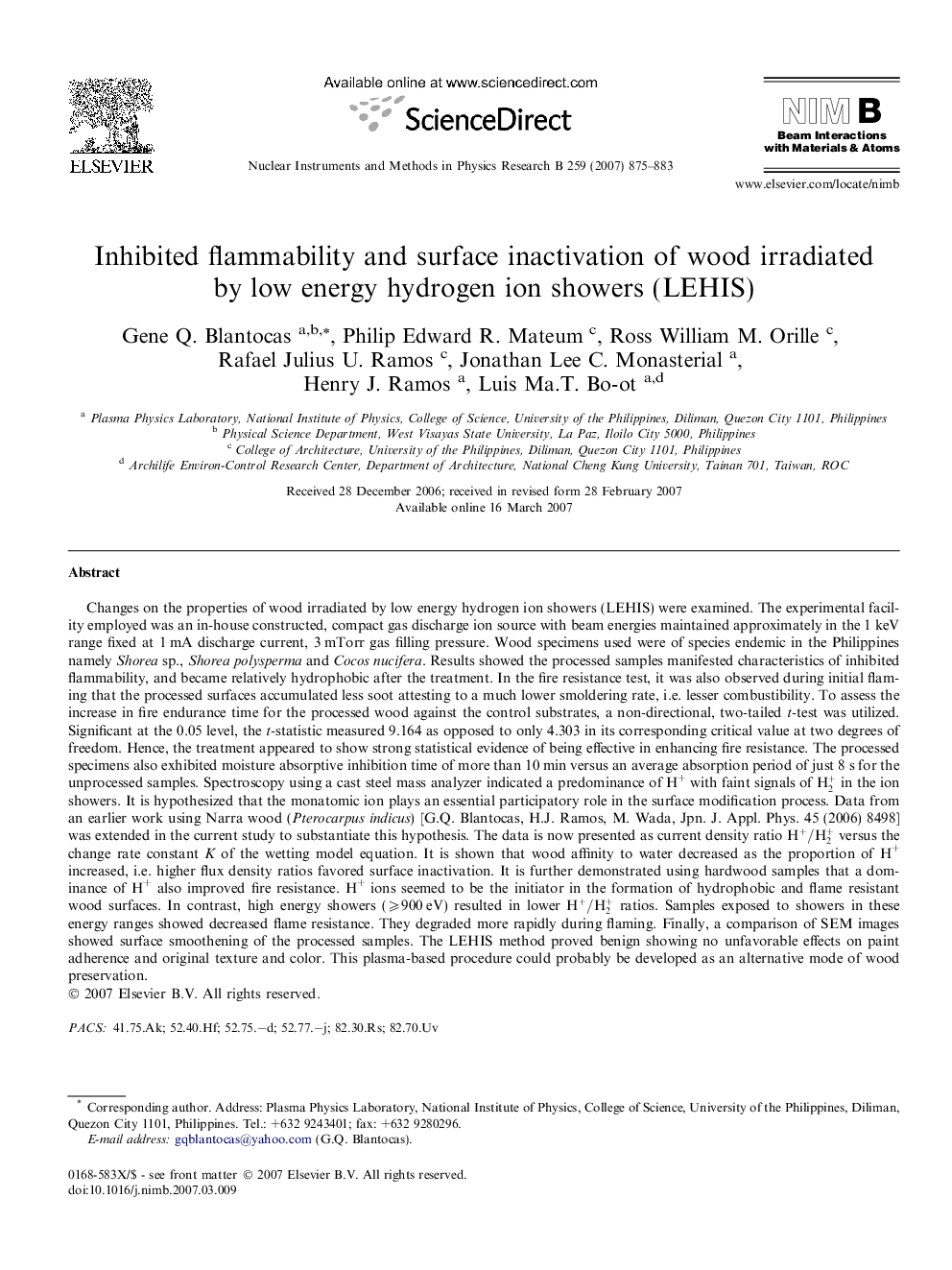| کد مقاله | کد نشریه | سال انتشار | مقاله انگلیسی | نسخه تمام متن |
|---|---|---|---|---|
| 1686695 | 1010614 | 2007 | 9 صفحه PDF | دانلود رایگان |

Changes on the properties of wood irradiated by low energy hydrogen ion showers (LEHIS) were examined. The experimental facility employed was an in-house constructed, compact gas discharge ion source with beam energies maintained approximately in the 1 keV range fixed at 1 mA discharge current, 3 mTorr gas filling pressure. Wood specimens used were of species endemic in the Philippines namely Shorea sp., Shorea polysperma and Cocos nucifera. Results showed the processed samples manifested characteristics of inhibited flammability, and became relatively hydrophobic after the treatment. In the fire resistance test, it was also observed during initial flaming that the processed surfaces accumulated less soot attesting to a much lower smoldering rate, i.e. lesser combustibility. To assess the increase in fire endurance time for the processed wood against the control substrates, a non-directional, two-tailed t-test was utilized. Significant at the 0.05 level, the t-statistic measured 9.164 as opposed to only 4.303 in its corresponding critical value at two degrees of freedom. Hence, the treatment appeared to show strong statistical evidence of being effective in enhancing fire resistance. The processed specimens also exhibited moisture absorptive inhibition time of more than 10 min versus an average absorption period of just 8 s for the unprocessed samples. Spectroscopy using a cast steel mass analyzer indicated a predominance of H+ with faint signals of H2+ in the ion showers. It is hypothesized that the monatomic ion plays an essential participatory role in the surface modification process. Data from an earlier work using Narra wood (Pterocarpus indicus ) [G.Q. Blantocas, H.J. Ramos, M. Wada, Jpn. J. Appl. Phys. 45 (2006) 8498] was extended in the current study to substantiate this hypothesis. The data is now presented as current density ratio H+/H2+ versus the change rate constant K of the wetting model equation. It is shown that wood affinity to water decreased as the proportion of H+ increased, i.e. higher flux density ratios favored surface inactivation. It is further demonstrated using hardwood samples that a dominance of H+ also improved fire resistance. H+ ions seemed to be the initiator in the formation of hydrophobic and flame resistant wood surfaces. In contrast, high energy showers (⩾900 eV) resulted in lower H+/H2+ ratios. Samples exposed to showers in these energy ranges showed decreased flame resistance. They degraded more rapidly during flaming. Finally, a comparison of SEM images showed surface smoothening of the processed samples. The LEHIS method proved benign showing no unfavorable effects on paint adherence and original texture and color. This plasma-based procedure could probably be developed as an alternative mode of wood preservation.
Journal: Nuclear Instruments and Methods in Physics Research Section B: Beam Interactions with Materials and Atoms - Volume 259, Issue 2, June 2007, Pages 875–883